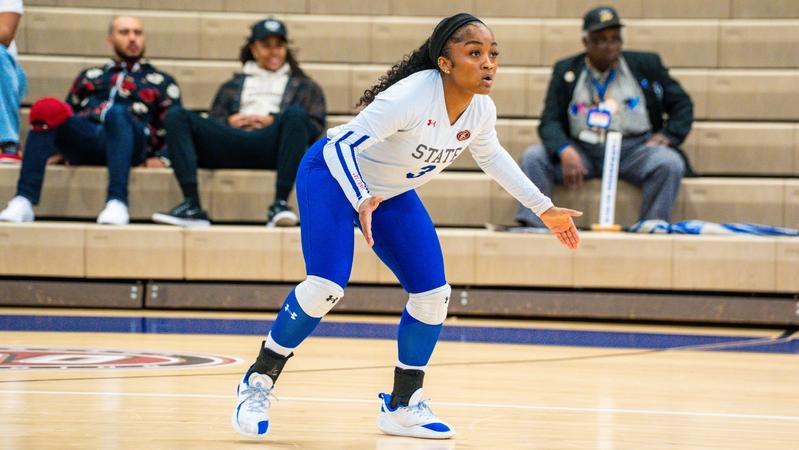Sports
Polsat Plus Group integrates NativeWaves EXP into its Polsat Box Go streaming service
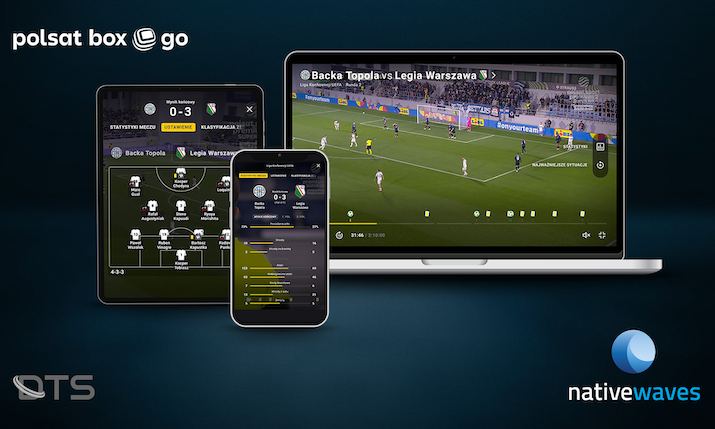

NativeWaves has launched NativeWaves EXP into the Polsat Box Go streaming service from Polsat Plus Group, a leading provider of digital entertainment and telecommunications services in Poland.
NativeWaves EXP is designed to enhance the viewer experience by providing synchronised, multi-view, and interactive features. This technology has been launched into Polsat Box Go, offering sports fans an unparalleled viewing experience since the end of last year. To date, dozens of matches have been broadcast live with additional features to all Sport package subscribers without additional cost.
“We are glad to bring NativeWaves EXP to our own Polsat Sport channels on Polsat Box Go mobile apps, providing our users with an immersive and interactive way to enjoy their favorite sports,” said Grzegorz Janczura, internet projects department director at Polsat Plus Group, responsible for Polsat Box Go. “This launch aligns with our commitment to leveraging cutting-edge technology to deliver superior entertainment experiences.”
Christof Haslauer, CEO of NativeWaves, said: “We are excited to partner with Polsat Plus Group to bring NativeWaves EXP to sports content offered by Polsat Box Go. Our technology is designed to revolutionise how viewers engage with live sports, and we believe this integration will set a new standard for sports entertainment.”
Key features of NativeWaves EXP include the ability for viewers to choose from multiple camera angles, allowing them to choose their preferred perspective for various sports events. In addition, live statistics, player tracking, and data overlays are all integrated into the viewing experience, delivering instant access to key metrics without leaving the Polsat Box Go app, while instant replays from any camera angle, give viewers complete control over how they experience key match moments.
These features are powered by the coordination of NativeWaves technology and the operational expertise of DTS,which is responsible for managing the multicamera operations that make the multi-view experience possible.
“It’s exciting to help bring this next generation viewing experience to life. Our role in handling multicamera operations ensures that fans enjoy dynamic, high-quality streams with precision and reliability,” said Krzysztof Lubiński, CEO of DTS.
Sports fans will be able to access these new features through the updated Polsat Box Go mobile apps, available on both iOS and Android platforms. The introduction of NativeWaves EXP on website browsers and Connected TV platforms is scheduled for a later date.
Sports
Fall 2025 SouthCoast High School Girls Volleyball Super Team
Jan. 9, 2026, 4:02 a.m. ET
The high school girls volleyball season on the SouthCoast was a strong one. Of the area’s nine teams, five — Dartmouth, Fairhaven, GNB Voc-Tech, Old Rochester and Wareham — qualified for the 2025 MIAA playoffs.
Old Rochester had the deepest run, reaching the Division 3 Elite 8 after winning the South Coast Conference Large Division crown.
Sports
No. 2 UH men’s volleyball makes easy work of No. 7 Loyola Chicago
Sports
T&F Set to Host Penn Select

PHILADELPHIA – The University of Pennsylvania men’s and women’s track & field teams return to the Ott Center on Jan. 10, hosting the Penn Select.
Field events are scheduled to begin at Noon with weight throw, high jump, pole vault, and long jump. Running events will start at 2:00 p.m. with the women’s mile.
PENN SELECT
Saturday, January 10
Jane and David Ott Center for Track and Field | Philadelphia, Pa.
Live Results, Schedule of Events, Watch Live – (ESPN+)
Tickets – $5 Youth (2-12), $10 Adult
Teams Competing
Delaware State, Howard, LaSalle, Lehigh, Morgan State, Penn, Rider, Rutgers, St. Joseph’s, Temple, Townson, and Villanova.
Quaker Notemeal
Jessica Oji made her collegiate debut in shot put at the Penn Opener (Dec. 5), breaking the Ivy League indoor record with a mark of 17.72m (58′ 1.75″).
Adannia Agbo broke the school record in the triple jump recording a distance of 13.05m (42′ 9.75″), rank second in the NCAA.
Jake Rose won six of seven events in the men’s heptathlon scoring 5647 points, setting a school record.
Freshman Joseph “Tiago” Socarras took over the track in the men’s 1000m crossing the finish line first with a school record time of 2:20.39.
Penn closed out the meet with a fifth school record, as the 4x400m relay team of Leo Francis, Nayyir Newash-Campbell, Tiago Socarras, and Ryan Matulonis ran 3:09.78 to claim victory.
NCAA Top 25
2. Jessica Oji, Shot Put – 17.72m
2. Adannia Agbo, Triple Jump – 13.05m
5. Jake Rose, Heptathlon – 5647 pts
16. Matthew Kathiravelu, Triple Jump – 15.06m
22. Keira Beaumont, 60m – 7.44
25. Ryan Matulonis, 60m H – 7.96
25. Raina Pietrzak, Pentathlon – 3560 pts
6. Men’s 4x400m – 3:09.78
17. Women’s 4x400m – 3:45.22
Leading the Ivy League
Keira Beaumont, 60m – 7.44
Tiago Socarras, 1000m – 2:20.39
Ryan Matulonis, 60m H – 7.96
Mark Hellwig, High Jump – 2:06m
Jake Rose, Long Jump – 7.12m
Paris Ivery, Long Jump – 5.96m
Adannia Agbo, Triple Jump – 13.05m
Jessica Oji, Shot Put – 17.72m
Jake Rose, Heptathlon – 5647 pts
Men’s 4x400m – 3:09.78
Women’s 4x400m – 3:45.22
Ivy League Athlete of the Week
Jessica Oji – Dec. 9
Jake Rose – Dec. 9
Upcoming Meets
Jan. 17 – Quaker Invitational (Ott Center)
Jan. 22-24 – Penn 10 Elite (Ott Center)
Jan. 30 – Penn Invitational (Ott Center)
Jan. 30 – 31 – Stan Scott Invitational (Lubbock, Texas)
About the Ott Center
The 73,000-square foot facility on River Fields Drive is connected to the Hollenback Center, adjacent to the Schuylkill River and south of Penn Park. Designed to be filled with natural light, the new building features large, clear story windows which face the Schuylkill River and align with the multi-story windows on the flanks of Hollenback, which was originally the campus powerplant.
The facility is designed to honor Penn’s long tradition of excellence in track and field and will enhance and provide support to the Penn Relays – the oldest and largest track and field event in the country.
The facility contains a banked 200 meter running track designed around specific geometric relationships between the straight and curved track sections to produce optimal conditions for running events, two long jump/triple jump runways, two pole vault runways, an eight-lane infield for sprints, hurdles and high jump, and a throwing area for the shot put and weight throw. With spectator seating of more than 1,000, the Ott Center will be able to host a series of exciting youth, high school and college events for years to come.
Sports
Michigan State Indoor Track & Field Returns to Action at Wolverine Invitational

Date: Saturday, Jan. 10
Location: U-M Indoor Track & Field Building | Ann Arbor, Mich.
Live Results
EAST LANSING, Mich. – Michigan State track & field returns to action on Saturday, Jan. 10 at the Wolverine Invitational.
This is the Spartans’ first meet since the holiday break. Michigan State will have several sprinters along with a group of field athletes in action.
The field events begin at 10:30 a.m., while the running events start at 11 a.m. Tess Roman will start the running action for MSU in the prelims of the 60m hurdles. Roman will also compete in the women’s shot put. Logan Allen and Dylan Terryberry will follow in the prelims of the 60m hurdles at 11:15 a.m. Last time that Allen competed at the GVSU Holiday Open, he set the Michigan State record with a time of 7.77 in the 60m hurdles.Terryberry will also be in action in the high jump.
In the 300m, Elizabeth Anderson and Alexys Wilson will compete for the Spartans in the final running event for the MSU women. In the field events, the Leila Barmore and Gabrielle Jeffries will be in action in the long jump.
On the men’s side, Michigan State will have three athletes in the 60m dash in Cameron Cheetam, Drew Novak and Carter Bissell. The Spartans will have two more men in field events. Adam Blue will contest the pole vault and Andrew Harding in the long jump.
Sports
Five Volleyball Student-Athletes Earn Southland All-Academic Honors

NEW ORLEANS – Five New Orleans Privateers volleyball players earned a spot on the Southland Conference All-Academic Team that was announced by the conference office on Friday afternoon.
Courtney Roundtree, Defne Eciroglu, Vanae Sapp, Alessandra Meoni and Lani Alleman all earned spots on the team.
Roundtree has a 3.33 GPA as a Sociology major with a minor in Psychology. The senior middle blocker played every set this season and accrued 236 kills. For her career, Roundtree finished with 653 kills and 199 total blocks. She had a stretch of eight consecutive matches with 10 or more kills this season.
Eciroglu currently has a 3.87 cumulative GPA after the fall semester as a Chemistry major. The junior setter entered the top 10 in program history in career assists and now has 1,601 assists in her three years on the Lakefront. She had 713 assists and 198 digs for the 2025 campaign.
Sapp finished holds a 4.00 GPA while in a Master’s program for Education. Sapp transferred to the Privateers for her final year in 2025 and finished with 158 kills along with 228 digs. She had a pair of double-doubles against Lamar this season. Sapp also had 10 matches with 10 or more digs on the year.
Meoni is also a graduate transfer with a 4.00 GPA. She is in a Master’s program for Mathematics. Meoni finished the year with a team-high 249 kills and added 128 digs and 49 total blocks. She had five double-doubles on the season and had a 20-kill match against Nicholls and a 25-dig performance against East Texas A&M.
Alleman currently holds a 3.60 GPA as a Psychology major. The junior libero had 151 digs this season. She also finished her career in the top 15 in career digs per set in program history with 2.34. In her three seasons with the Privateers, Alleman finished with 658 digs in 259 career sets played.
These five women are the first Southland volleyball all-academic selections since Kaitlyn Grice in 2018.
BLUES ON TUES. NEWSLETTER
To keep up with all athletics news at the University of New Orleans, subscribe here for our weekly newsletter.
SOCIAL MEDIA
Fans are encouraged to follow @PrivateersVB on Twitter/X, @PrivateersVB on Instagram, like /PrivateersVB on Facebook and subscribe to the PrivateerAthletics YouTube channel.
Sports
Cross Country Lands Six on Academic All-MAC Team

KALAMAZOO, Mich. — The Mid-American Conference announced the 2025 Cross Country Academic All-MAC Team on Thursday morning, celebrating the achievements of 117 student-athletes who have excelled both in competition and in the classroom. The Broncos were headlined by six honorees on this year’s list.
The Academic All-MAC distinction honors student-athletes who demonstrate outstanding dedication to both their academic and athletic pursuits. To qualify, student-athletes must maintain a minimum cumulative GPA of 3.20 and participate in at least 50% of their team’s competitions during the season.
Ava Kurczewski (3.93, Exercise Science), Lara Machado Pereira (3.76, Biomedical Sciences), Larissa McGrath (3.97, Biomedical Sciences), Lily Overton (3.70, Exercise Science), Lauren Sancrant (3.68, Strategic Communications: Public Relations) and Madison Zarembski (3.98, Elementary Education) were the representatives this season.
-

 Sports2 weeks ago
Sports2 weeks agoBadgers news: Wisconsin lands 2nd commitment from transfer portal
-

 Rec Sports7 days ago
Rec Sports7 days agoFive Youth Sports Trends We’re Watching in 2026
-

 Sports3 weeks ago
Sports3 weeks agoIs women’s volleyball the SEC’s next big sport? How Kentucky, Texas A&M broke through
-
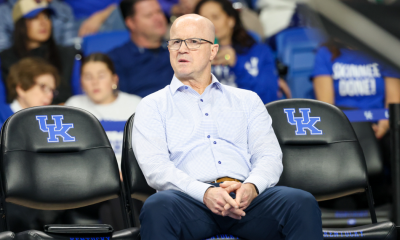
 Sports2 weeks ago
Sports2 weeks agoKentucky VB adds an All-American honorable mention, loses Brooke Bultema to portal
-

 Rec Sports3 weeks ago
Rec Sports3 weeks agoNBA, Global Basketball Community Unite for World Basketball Day Celebration
-

 Motorsports2 weeks ago
Motorsports2 weeks agoDr. Patrick Staropoli Lands Full-Time O’Reilly Ride with Big Machine Racing
-
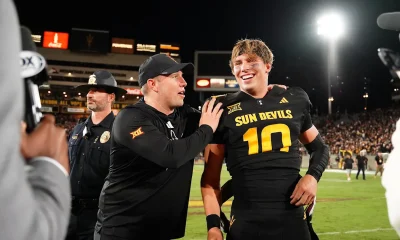
 NIL3 weeks ago
NIL3 weeks ago$2.1 million transfer portal QB predicted to join College Football Playoff team
-

 Sports2 weeks ago
Sports2 weeks agoTexas A&M volleyball’s sweep of Kentucky attracts record viewership
-
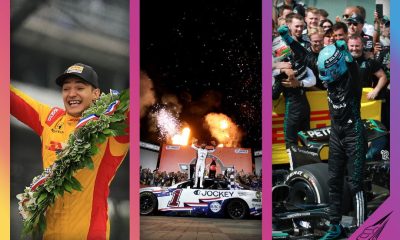
 Motorsports3 weeks ago
Motorsports3 weeks agoNASCAR, IndyCar, and F1 Share These Race Days in 2026
-

 Rec Sports2 weeks ago
Rec Sports2 weeks agoTennessee Developments: Rolling on the River

































